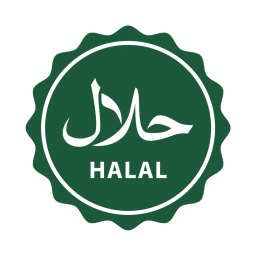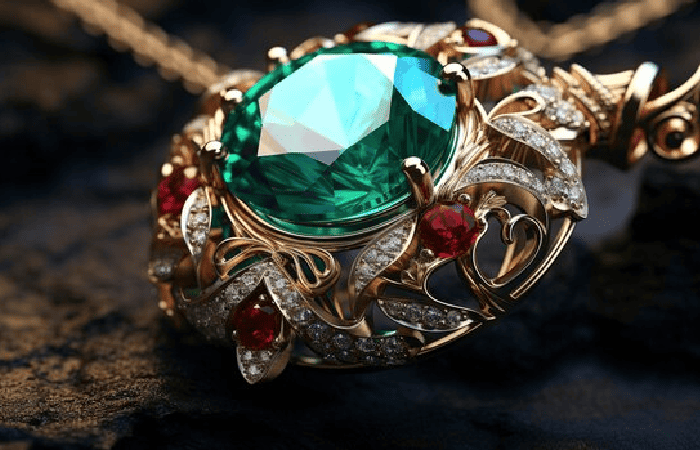Halal Clothing - Evolution of Hijab Fashion Across Continents
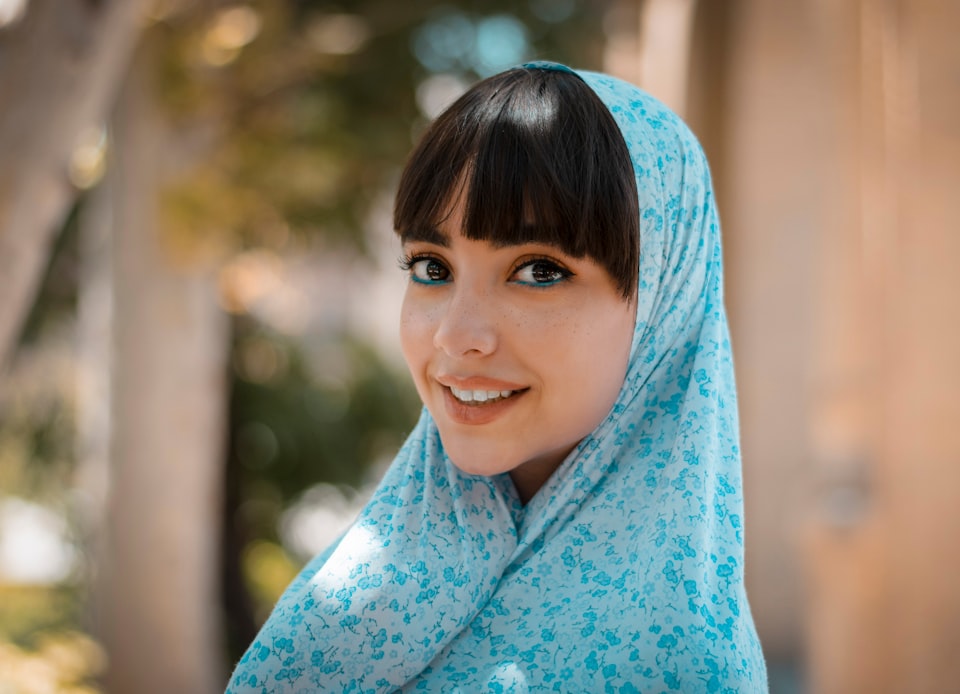
New trends are always emerging in the hijab fashion industry. Muslim women are increasingly expressing their individuality and creativity via dress. The diversity and wealth of the Muslim world are reflected in hijab fashion.
The hijab's style has evolved a lot throughout the years, reflecting the many cultures and traditions of Muslim women all around the world.
What is a Hijab?
Hijab is an Arabic term that means Cover. In contemporary usage, it refers to the headscarf that Muslim women wear. The hijab is a representation of modesty and faith. Women wear it for several reasons, including to conceal their bodies and hair from prying eyes. It displays their religious identity and demonstrates respect for both themselves and their community. Although a hijab can take many different forms, it particularly refers to a headscarf that is wrapped around the head and covers the hair, neck, and ears.
The Spiritual and Cultural Significance of Wearing a Hijab
The hijab has evolved into a potent representation of a culture and spiritual ideology that can appear in contrast with modern ideals. But for Muslims, it serves far more practical purposes than symbolic ones. Modesty, a worshipful deed, and a declaration of identity are a few examples of how to interpret its intentions.
It is acknowledging one's body as a divine trust that needs to be maintained and taken care of until it is given back to its Creator as a contribution to modesty. A person can do their business with dignity and distinguish their private lives from their public lives by covering their body. In this sense, one's body continues to be their personal space, shared solely with close friends and family.
It might serve as a metaphor for a person's journey towards subjection to God as an act of worship. The choice to wear the hijab can be a personal achievement for Muslim women who exist at the nexus of the Islamic and Western cultures. They have chosen to bow to God over the expectations of society.
Making this choice can be difficult, but it is frequently rewarded with greater confidence and respect for oneself for putting one's own needs for acceptance and approval from others above all else. It may also act as protection when navigating a world filled with prejudice and misunderstandings to believe that obeying God will grant His blessings to you.
Islam's sacred scripture, the Quran, teaches that women must wear modest clothing. For women, wearing the hijab is one method to accomplish this duty. Muslim women can display their cultural background through the hijab. The hijab is also regarded as a tool to uphold traditional values and rituals in some Muslim societies.
Another option for women to connect with God is to wear the headscarf. By covering her hair, a lady is metaphorically hiding her most priceless asset—her beauty. Women can demonstrate their humility and put their attention on their connection with God by acting modestly.
Many Muslim women show their spiritual identity by wearing the headscarf. They can display to the world that they are pleased to be Muslim women and that they are devoted to leading Islamic lives by doing this.
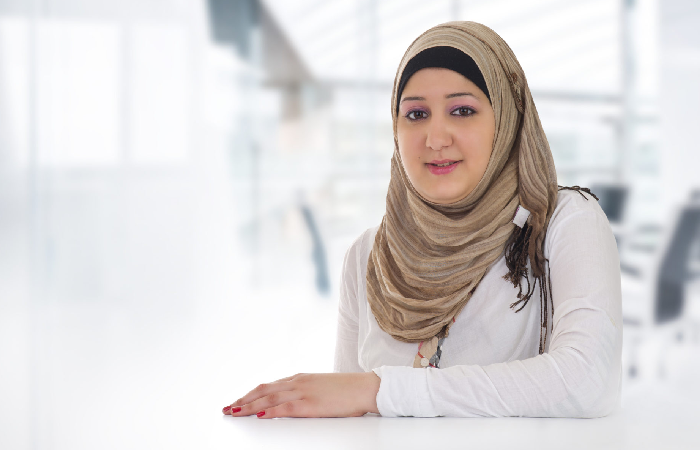
Evolution of Hijab
The hijab did not exist in its present form prior to the introduction of Islam in the seventh century CE. Women who were primarily affluent and privileged wore hijab in the early years of Islam. It was a symbol of prestige and status. However, more women from various backgrounds began to wear the hijab over time.
One of the main shifts in hijab fashion has been the rise of modest fashion. Muslim and non-Muslim women alike appreciate the modest attire trend. Modest clothing is a distinguishing characteristic of clothing. It is of loose-fitting and covers the body from the neck to the ankles.
Another important development is the rise of Muslim women's visibility in public life. Muslim women today play active roles in many aspects of society and hold a variety of jobs. The need for modest yet stylish hijab clothing has surged as a result.

Historical Perspective of Hijab
The Hijab has its roots in pre-Islamic Arab culture. Powerful women often wore head coverings to demonstrate their modesty and respectability. The Qur'an, the revelations from the Almighty Allah, and the Hadiths of the Prophet Muhammad(PBUH) all make sense of it.
Origin
The practice of veiling women was invented before Islam. Many societies in the Middle East, including the Byzantines, Sassanids, and others, practiced veiling. There is also some proof that the Ban Isml and Ban Qan clans in southwest Arabia engaged in the practice of veiling prior to the advent of Islam. Within such cultures, wearing a veil indicated a woman's social standing. The wearing of a veil in Mesopotamia indicated a woman's high status and respectability.
To set themselves apart from slaves and immoral women, women wore the veil. Unchaste or filthy women, including harlots and slaves, were forbidden from donning the veil in several prehistoric legal traditions, such as Assyrian law.
They faced harsh punishments if they were discovered illegally veiling. The practice of veiling expanded throughout the ancient world through invasion, just like many other concepts did at this time.
References From the Holy Quran
Surah 24:30–31, which tells both men and women to dress and act modestly but gives more specific instructions on modest dress for women, are the verses that make the demand for modest dress the clearest.
1. Surah Nur 24:30-31
O Prophet! Inform the believing men to look away and maintain their modesty. For them, that is more pure. Allah is undoubtedly aware of what they do. And instruct the believing women to keep their virginity intact, drop their look, and refrain from showing off any adornments beyond what is naturally visible. They should draw their veils over their chests and not show off their hidden adornments to anyone.
2. Surah Ahzab 33:59
Prophet Muhammad(PBUH) was instructed to inform Muslim women to cover up when they go outside in Qur'an 33:59 in order to prevent harassment.
Allah said "O Prophet! Ask your wives, daughters, and believing women to cover their bodies. This increases the likelihood that they will be regarded as honorable." And Allah is Most Merciful and Forgiving.
The men of Ansar went to the women of Ansar and repeated to them the words Allah had revealed in Surah An-Nur. They recited these verses to their wife, daughter, sister, and other female relatives. As an expression of faith and confidence in what Allah had revealed, each of the women among them stood up, took her adorned wrapper, and wrapped herself in it.
Significance of Hijab in Ancient Civilization
In Ancient Civilization high-class women frequently wore veils as a symbol of their modesty and respectability. The veil has been one of man's most fundamental requirements since his creation. They have used every trick in the book to conceal themselves. This veil occasionally shielded them from heat, cold, snow, and rain, and occasionally protected their honor and virginity.
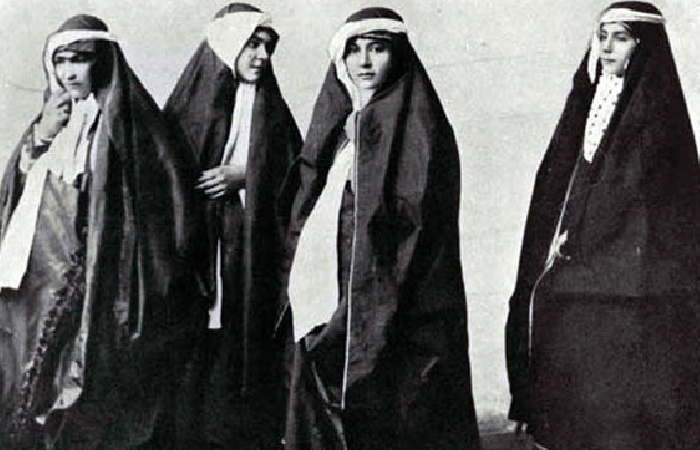
The concept of veiling is really old. The research on the hijab's past reveals that certain people had been wearing it before it became popular among Muslims.
According to Ancient Greek writings, Greek women were said to cover their heads but leave their faces uncovered, except when they went to the market.
According to the Jews Literature, if a woman violated Jewish law, for instance by appearing in public without a veil on her head, conversing with unknown men, or talking loudly at home where neighbors could hear her, then her husband was entitled to divorce her without giving her the agreed-upon dowry.
The women of the higher social groups in ancient Iran were afraid to leave the house unless they were riding in a covered palanquin. Even from his father and brothers, married women had to cover themselves.
The hijab was reportedly a component of women's dress in ancient Rome and ancient Greece. It was regarded as a peculiar theme for jewelry for women, according to historical writing. The Jews and all other groups in ancient Iran adhere to the hijab in India and in greater severity than in Islam.
Early Forms Of Hijab
Following the revelation of the verses of the Hijab, women started covering themselves with modesty, and freedom started to flourish in society. Women in those times wore veils, which hid the area of the face beneath the eyes. The study of Islamic countries' past reveals that women supported the hijab and attempted to start a new style of hijab to cover their bodies.
The Islamic headscarf has also benefited women who lived throughout the early Islamic era. There is a custom that describes hijabi women who walk the streets of Arabia as liberated ladies who are not mistreated by ignorant people or bullies.
Different Types of Hijab
Hijabs come in a wide variety of styles, and a woman may prefer one over another depending on her preferences, cultural background, and religious convictions. Hijab forma that are among the most popular include:
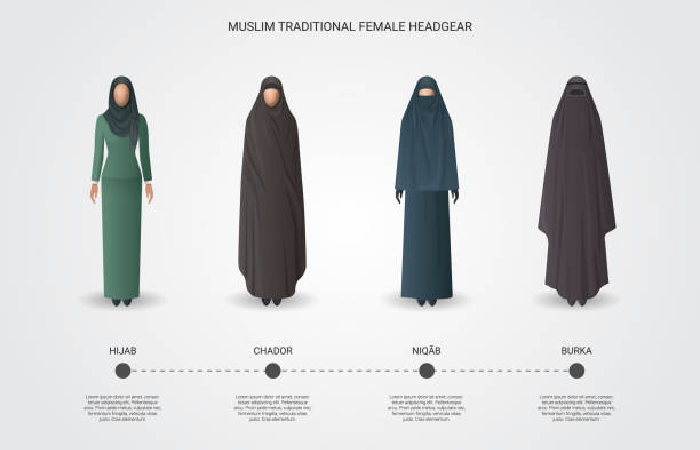
Khimar: The chest, neck, and head are all covered by a long scarf.
Niqab: A face-covering scarf that only leaves the eyes visible.
Burqa: A complete body covering with a mesh covering over the eyes.
Chador: A lengthy, semicircular cloak worn over the torso and head.
Turban: A lengthy fabric wrapped around the head.
Additionally, some women prefer to wear a mix of other hijab styles, such as a khimar and niqab or a turban and chador.
Timeline of Evolution Of Hijab
Pre-Islam: Women wore the earliest versions of the hijab throughout a variety of pre-Islamic cultures, including Sumeria, Egypt, Greece, Rome, and India.
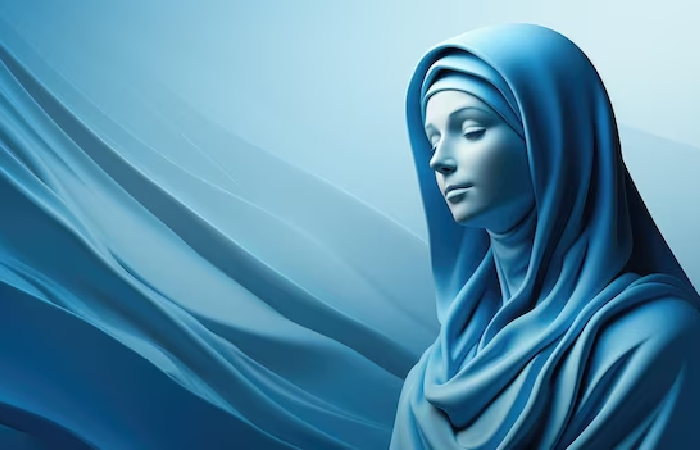
The Hijab was frequently linked in these societies to modesty, deference, and social standing.
7th century: The Prophet Muhammad receives the revelation of the Quran, which contains verses that some Muslims interpret as compelling women to cover their bodies and heads.
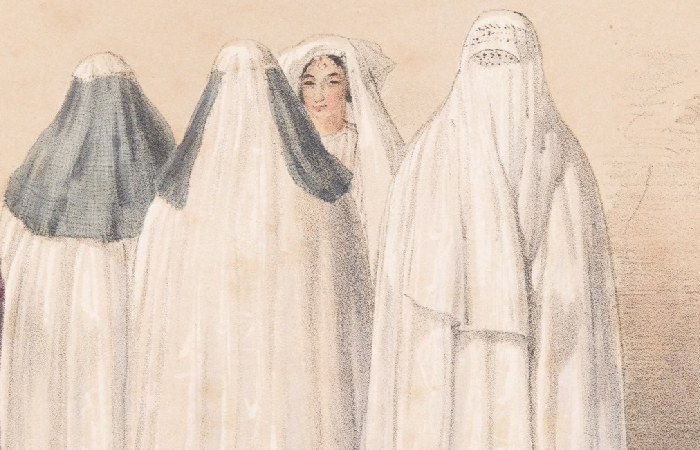
However, there are many different interpretations of what it means to dress modestly, and there is no one definition of the hijab in the Quran.
8th–10th centuries: The Abbasid Caliphate built a sizable Islamic dominion, and Muslim women started donning the headscarf more often.
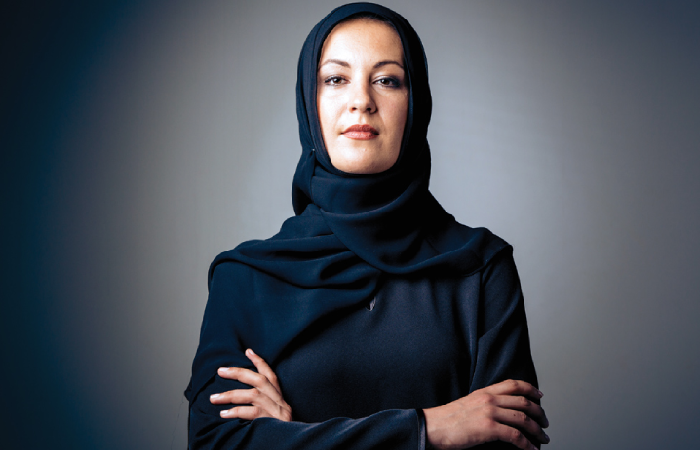
11th - 13th Centuries: The Seljuk and Ottoman Empires were created between the 11th and 13th centuries, during which time Muslim women increasingly wore the headscarf.
14th–16th Centuries: Following the Black Death pandemic, there was a worldwide rebirth of religious piety, and the hijab became more strongly linked to Islamic identity.
17th–19th Centuries: Religious impact on society declined as a result of the European Age of Enlightenment.
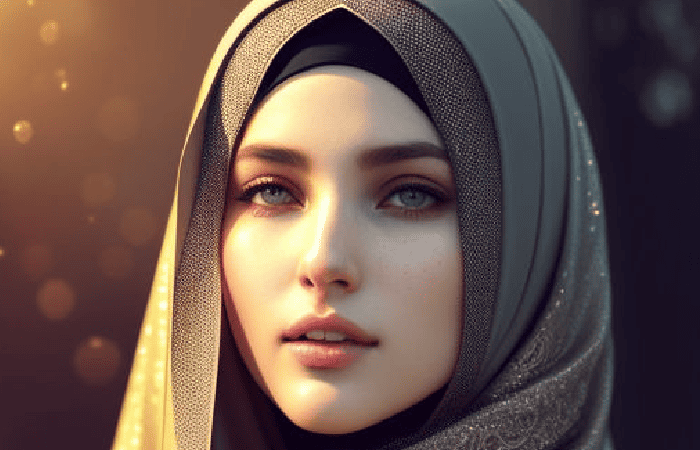
In contrast, the Islamic world continues to be predominantly devout, and Muslim women continue to wear the hijab frequently.
20th–21st Centuries: The hijab was outlawed in 1925 by Iranian Shah Reza Shah Pahlavi to modernize the nation.
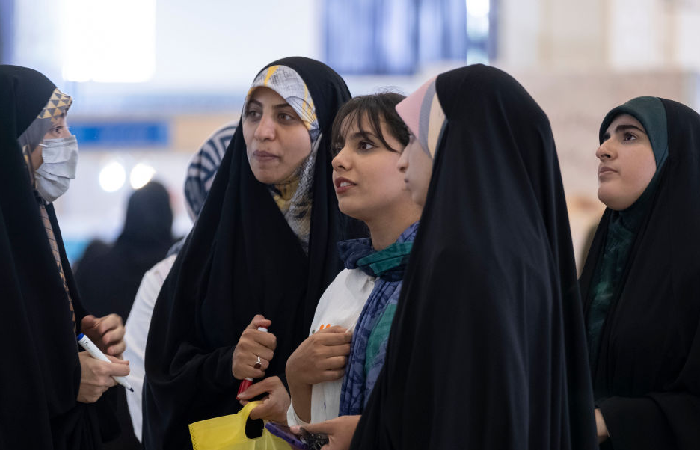
The Pahlavi monarchy was overthrown and an Islamic republic was established by the Iranian Revolution in 1979. All Iranian women are required to wear the hijab.
1900- 2000: Several European nations banned the hijab and other religious attire in schools. This happened during the 1990s and 2000s.
2011 saw the start of the Arab Spring demonstrations. Many Arab women began to associate the headscarf with female empowerment.

In the present scenario, Millions of Muslim women wear the hijab all around the world. It serves as a representation of the Islamic faith and identity, as well as a means for Muslim women to express their uniqueness and subvert preconceptions.
The hijab's historical context is intricate and complicated. It is crucial to keep in mind that the hijab is more than just a simple item of clothing; it is a representation of female empowerment, cultural identity, and religious faith.
Modern Interpritations of Hijab
Islamic modesty has a lengthy tradition and has been deeply instilled. The first modest Islamic clothing came in the late seventh century when the Prophet Muhammad (PBUH) established a dress code for both men and women. Based on the principles of modesty and respect for the human body, this dress code mandated loose-fitting clothing that covered the body from the neck to the ankles.
The traditional "hijab" is now a more elaborate, exquisite dress that covers the complete body, having evolved from being just a head covering. Modest Islamic attire has also been significantly impacted by the global fashion industry, as designers have updated classic styles. Designers are producing fashionable yet modest items that nevertheless follow the rules of Islamic dress, such as abayas and hijabs.
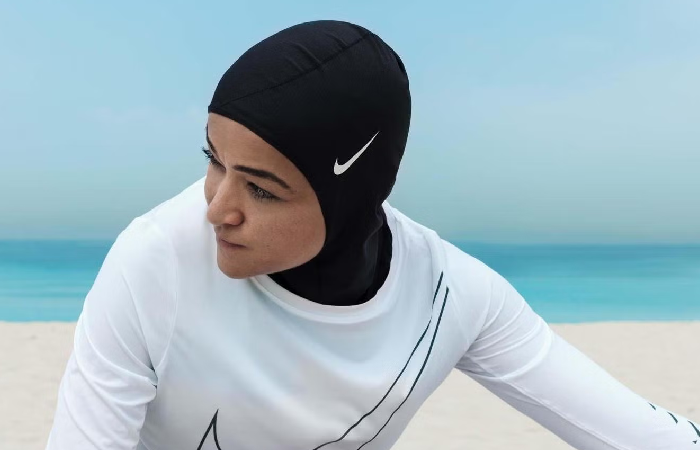
Islamic modest dress has recently grown more prevalent in the mainstream fashion industry. Numerous high-end fashion brands, including Dolce & Gabbana, Givenchy, and Chloé, have introduced collections with modest Islamic clothes. The Muslim community, who now have access to fashionable, modest clothing options that reflect their cultural background, has responded to this with tremendous enthusiasm.
Islamic modesty has evolved, which is evidence of how long it has played an important part in Muslim culture. Islamic modest dress is becoming more prevalent in contemporary style, proving that this classic look is here to stay.
The Influence of Media, Art, and Popular Culture on Hijab Fashion
Muslim consumers do not distinguish between religion and daily life; they regard them as being intertwined. As a result, an Islamic form of consumption has been developed by individuals who identify as religious, seek to distinguish themselves from the secular section, and want to live their lives. Islamic consumerism is growing all across the world, from halal goods and services to Islamic fashion.
Islam and fashion ideas frequently continue to be at odds with one another. Religion is a static aspect of culture, but fashion is a changing phenomenon. Islam does not fit into a culture that is qualified with instant change and liquidity since it is the profound and sacred cosmos of unending values and temperance.
A Muslim woman should dress in clothing that conceals her physical shape and covers her entire body. That stands in stark contrast to contemporary fashion, which emphasizes showcasing feminine beauty. Fashion is a notion based on looking appealing through clothing, but the hijab tries to shield women from the male gaze and prevent women from being attractive.
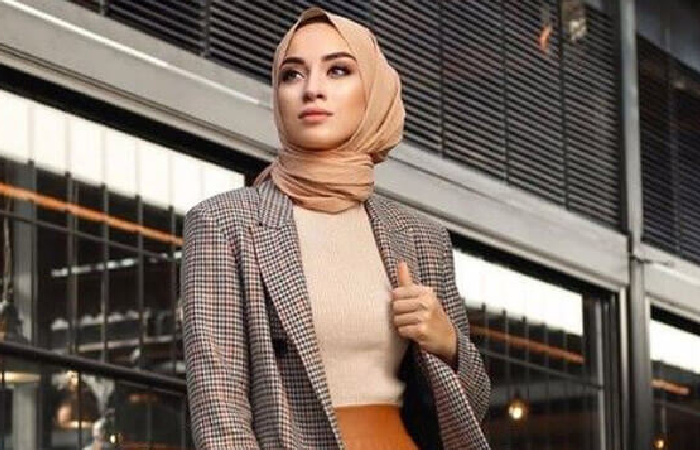
But as Islam has become more visible in the West, fashion, which has traditionally been connected with Western modernity, is increasingly manifesting itself in Islamic fashion practices. As a result, the hijab concept, which has evolved along with modernization, now has a new definition and image that combines consumption culture and fashion and meets the needs of modern society.
Companies specializing in hijab fashion, also known as modest fashion, or longer, looser clothing for women who desire to dress modestly, emerged in response to conservative young women's demand for both modest and attractive clothing options.
The State of Global Islamic Economy Report 2018 states that in 2017, Muslim consumers spent $270 billion on modest clothing. Sales are predicted to reach $361 billion by 2023 and $402 billion by 2024, according to the research. The demand for hijabs from various Muslim nations is growing, and this is drawing the attention of prominent figures in the mainstream fashion industry. Many well-known fashion companies are also involved in modest fashion, and they broaden the scope of their marketing initiatives to include this market.
Hijab Across Continents
Muslim women can choose to wear the hijab. It is a symbol of modesty. It reveals one's devotion to and faith in God. There are over 1.6 billion Muslims worldwide, which explains why women from various cultures and nations, ranging from Afghanistan to Indonesia, proudly wear a variety of hijab styles. Each nation has its own distinctive and traditional hijab style. Every nation has a distinct fashion sense that should be admired and embraced!
Asia
In Asia, there are numerous ways to wear the hijab. Some women prefer to cover their entire neck and hair, while others prefer to show their faces. Some women choose to wear simple headscarves, while others choose more ornate hijab designs that feature adorning veils or turbans.
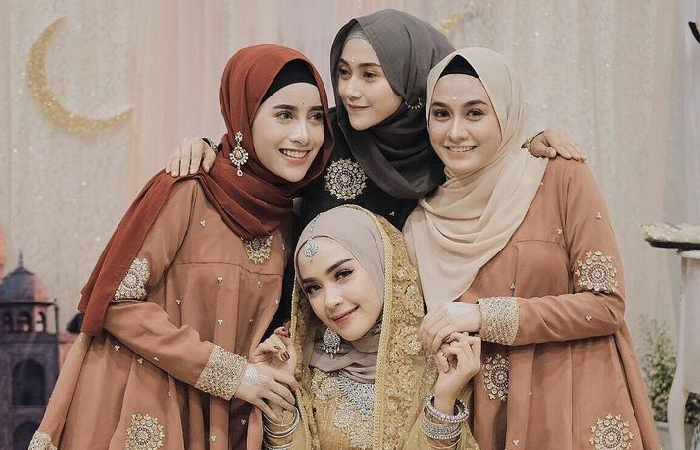
All women must wear the hijab in public places in various Asian nations, including Iran and Afghanistan. Although not compulsory by law, the hijab is frequently worn in other nations like Indonesia and Malaysia. And while the hijab is less widespread, in other nations like Bangladesh and India, many Muslim women nonetheless wear it.
Middle East
The Gulf nations frequently observe more women wearing the hijab completely covered. While the niqab is most famously worn in Saudi Arabia, it is also usual to see women wearing a full-length black abaya as well as a black hijab around their heads in Bahrain, Kuwait, and Qatar.
Omani women frequently begin their headscarf covering above their hairline and pin it below their chin. The intense heat usually necessitates a thinner scarf.
Yemen has a hijab fashion that covers the neck, forehead, and cheeks and is fastened with a pin under the chin, similar to Oman. The niqab is very frequently worn here.
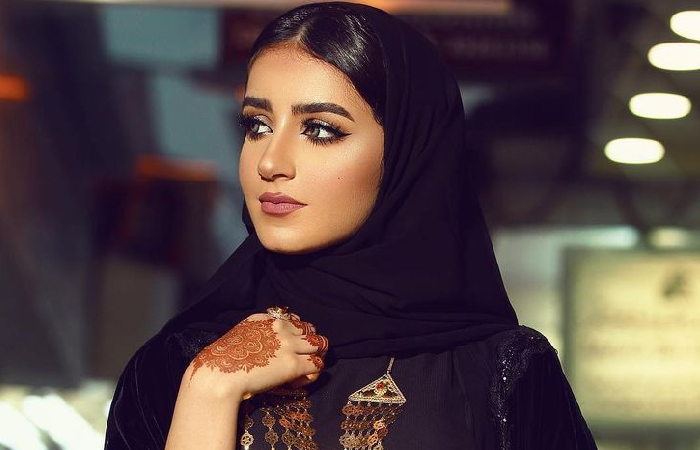
All women must wear the hijab in public places in various Middle Eastern nations, including Iran and Saudi Arabia. Although not mandated by law, the hijab is often worn in other nations like Qatar and the United Arab Emirates.
Hijab Styles in the Middle East
Three Islamic modest clothing styles, including the abaya, shayla, and khimar, are commonly worn by Muslim women throughout the world, particularly in the Middle East, Africa, and Asia.
Traditional abayas from the Gulf region are frequently made of black silk or crepe and occasionally have gold or silver embroidery. Oman's traditional shaylas are normally made of white cotton or polyester and may include brilliantly colored embroidery or trim.
Additionally, traditional Moroccan khimars may be decorated with exquisite beadwork or lacework and are frequently made of black or brown wool.
Abayas, shaylas, and khimars are increasingly being made in more contemporary and stylish designs. They are presently being produced by numerous designers in a wide range of hues, designs, and materials. Even certain contemporary components, such as jeans, coats, and belts, are being included by some designers in their creations.
South Asia
The use of veils varies greatly throughout South Asia based on the nation, geography, religion, and socioeconomic class. Muslim women frequently don hijab (headscarf) in several nations like Pakistan and Afghanistan. Although less popular in other nations like Bangladesh and India, many Muslim women still don the hijab there.
In South Asia, the three nations where the hijab is worn most often are Pakistan, Bangladesh, and the Maldives. Despite the hijab's declining popularity in India, many Muslim women there still wear it.
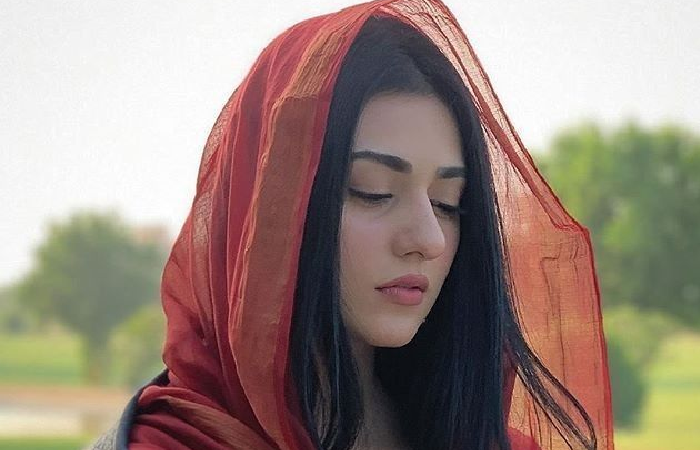
A dupatta is a long scarf that can be worn in several different ways over the head and shoulders in Pakistan. In Bangladesh, many women wear burqas, a full-body covering that only exposes the eyes.
There is evidence that the practice of veiling for before Islam arrived in South Asia. For instance, Hindu ladies in ancient India occasionally hid their faces and heads behind veils called ghunghats.
The practices of veiling in the area were significantly impacted by the spread of Islam in South Asia in the 7th century AD. Islam encourages modesty and the covering of the head and body but does not specifically mandate women to wear veils. As a result, a large number of Muslim women in South Asia started to wear the veil.
Southeast Asia
Although wearing the hijab is widespread in Indonesia, Malaysia, and the Philippines, each nation has its own distinctive hijab style.
Indonesia
The majority of Muslims worldwide reside in Indonesia, where there is a wide range of choices among women about the hijab. In Indonesia, some of the most popular hijab styles are as follows:
Pasmina: A long, rectangular scarf with the ends tucked in at the back and crossed in front that is wrapped over the head and neck.
Pashmina instan: An easier-to-put-on and take-off pasmina that has already been stitched.
Khimar: A long, baggy garment that covers the shoulders, neck, and head is called a khimar.
Jilbab: A long, baggy coat that covers the entire body from neck to down.
Kerudung: A headscarf that is typically worn by younger women and girls.
The vibrant colors and patterns used in Indonesian hijabs are among their most defining characteristics. There is a vast array of stylish hijab trends to select from, and Indonesian women are not hesitant to experiment with their hijab looks.
Malaysia
The Malaysian women tend to be more conservative than Indonesian women. The tudung, a headscarf that covers the head and neck but exposes the face, is the most popular type of hijab in Malaysia. Tudungs are frequently paired with baju kurung, a traditional Malay outfit made up of a long skirt and blouse.
In Malaysia, the jilbab, a long, baggy garment that covers the shoulders, neck, and head, is another well-liked hijab form. Jilbabs are frequently worn.
Compared to Indonesian hijab styles, Malaysian hijab styles tend to be more muted in terms of color and pattern. Malaysian ladies choose to dress in muted hues and straightforward patterns like floral or paisley motifs.
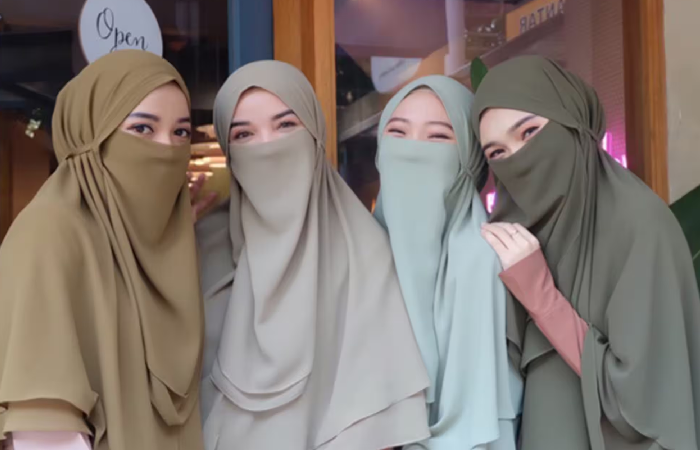
Philippine
Although there is a sizable Muslim population in the Philippines, it is mostly a Christian nation. Compared to women in Indonesia or Malaysia, Muslim women in the Philippines don the hijab in a more modest and conservative manner.
The khimar, a long, baggy garment that covers the shoulders, neck, and head. It is the most popular type of hijab in the Philippines. Abayas, which are long, baggy coats that cover the body from the neck down, are frequently worn with khimars.
Muslim women in the Philippines also don a range of alternative hijab designs, including the tudung and the jilbab. But usually, they opt to wear these styles in a more subdued manner, like fully covering the arms and chest.
Generally speaking, Filipino hijab fashions are less colorful and patterned than those from Indonesia or Malaysia. Muslim women in the Philippines like to dress in muted hues and straightforward designs like polka dots or stripes.
Africa
Morocco, Algeria, Tunisia, and Libya are all part of the Maghreb region of North Africa, which boasts a vibrant and varied cultural landscape. The region's women wear a wide variety of hijab styles, which reflects this.
Bright colors and striking patterns are two of the most characteristic aspects of Maghrebi hijab fashions. The Berber culture of the area, which is well-known for its vivid and colorful attire, has probably had an influence on this.
The use of traditional textiles like silk, chiffon, and velvet is another characteristic of Maghrebi hijab styles. Often, intricate and sophisticated hijab designs are made using these textiles.
The hayek is especially well-liked in Morocco, where Berber women in rural areas frequently don it. Cotton or linen are common lightweight, breathable fabrics used to make hayeks. Often, it is embellished with beautiful beadwork or embroidery.
The use of traditional Berber jewelry and accessories to accessorize hijab styles is another way that Berber culture has influenced fashion. For instance, Berber women frequently accessorize their headscarves with silver bracelets, necklaces, and earrings. They might also don traditional Berber headdresses like the tiznit or shadda.
With a great variety of cultures and customs, Sub-Saharan Africa is a large and diverse continent. The region's women wear a wide variety of hijab styles, which reflects this.

In Sub-Saharan Africa, a few popular hijab styles are as follows:
Hijab turban: A turban is a headdress made of a long length of fabric. Hijab turbans come in a range of styles and are frequently fashioned from vibrant, patterned textiles.
Hijab Cap: A fitted cap worn beneath the headscarf is called a hijab cap. In order to keep the hijab in place and stop it from falling off, hijab caps are frequently used.
Hijab shawl: A hijab shawl is a big, square-shaped scarf. It is worn over the shoulders and head. It can be worn in a many ways and are made of breathable, light materials.
Hijab Wrap: Long, rectangular scarves that are wrapped around the head and neck are called hijab wraps. Hijab wraps can be fashioned in a multitude of ways and are frequently made of vibrant, patterned fabrics.
Women in Sub-Saharan Africa frequently combine various hijab styles to create a distinctive appearance. A lady might pair a hijab cap with a hijab wrap or a hijab turban with a hijab shawl, for instance.
The hijab worn by women in Sub-Saharan Africa reflects the impact of both tradition and modernity. African traditional textiles and designs are frequently incorporated into hijab fashions. Modern hijab styles are also well-liked in the area, though.
For instance, a lot of women in Sub-Saharan Africa opt to wear hijabs in styles that are influenced by social media influencers and fashion bloggers.
Europe
The changing hijab in Europe is a reflection of the continent's increasing diversity and tolerance for Muslim women. Muslim women are increasingly opting to display their faith, culture, and individuality through their choice of hijab.
Here are some particular instances of how Muslim women in Europe are fusing Western and Islamic fashion in their headscarves:
A growing number of Muslim women in Europe are deciding to pair their headscarves with Western-style trousers and t-shirts.

Some Muslim women in Europe are opting to dress traditionally Islamically, such jilbabs and abayas, but with a contemporary Western flair.
For instance, they might accessorize their clothing with jewelry and scarves, which are Western accessories.
Modern and contemporary styles popular in countries in europe with significant Muslim populations
Growing diversity and acceptance of Muslim women in European society can be seen in the development of the hijab in that continent. Wearing the hijab to show one's beliefs, culture, and personal style is becoming more and more popular among Muslim women.
Europe's Muslim-majority nations have seen a rise in the following modern and contemporary hijab styles:
Hijab turban: This particular style is gaining popularity in Europe, but it is most prominent in Sub-Saharan Africa and among African American Muslims. Numerous materials, including cotton, chiffon, and silk, can be used to make hijab turbans. Embellishments like beads, sequins, and embroidery can also be used to beautify them.
Hijab Caps: The phrase "hijab cap" describes a form-fitting hat worn beneath a headscarf. It keeps the hijab in place and stops it from falling. This style is seen mostly in Saudi Arabia, Europe, Iran, Iraq, and other places.
These are mostly muslim populated areas. There are several materials that can be used to make hijab wraps and caps. These include polyester, silk, and cotton. They come in a wide range of colors and patterns.
Hijab Shawls: An enormous, square-shaped scarf is called a hijab shawl and it is worn over the head and shoulders together with a hijab wrap. To look more put together and secure, it is frequently worn with a hijab wrap.
This design is popular in Europe, Turkey, Egypt, and Pakistan. Cotton, polyester, and silk are a few materials that are used to make hijab wraps. They come in a variety of colors and patterns.
Americas
In addition to fashion, the contemporary hijab in America has other uses. It represents Muslim identity and tenacity powerfully as well. Muslim women in the United States are proudly donning the hijab in the face of growing Islamophobia. They are showcasing their pride in being Muslims and their integration into American society through the hijab.
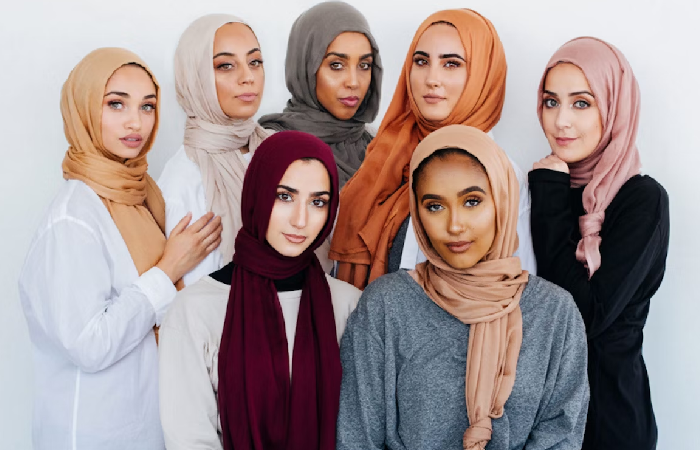
Several instances of contemporary and inventive ways Muslim women in America are wearing the hijab are provided below:
Muslimah-wearing female athletes: By donning the hijab during competition, these athletes are dismantling barriers and dispelling preconceptions. One American lady who participated in the Olympics while using a headscarf was Ibtihaj Muhammad.
Muslim fashion designers are producing fashionable and avant-garde hijab-friendly apparel. For instance, Somali-American model and fashion designer Halima Aden is well-known for her chic and modest hijab looks.
Hijabi entrepreneurs: Successful enterprises that serve the requirements of the Muslim community are being started by Muslim women entrepreneurs. For instance, Haute Hijab is a well-known internet merchant that offers modest apparel, including hijabs.
The diversity and energy of the Muslim population in America are reflected in the modern hijab. It represents the resiliency, religion, and identity of Muslims.
The Role of Digital Media, Online Platforms, and Brands in Shaping Hijab Fashion
The rise of the digital era has undeniably changed the landscape of fashion, with the hijab being no exception. The online sphere has breathed a new life into hijab fashion, providing platforms for creativity, innovation, and cross-cultural exchange.
From powerful brands like Modanisa to social media influencers, the digital realm has played a pivotal role in shaping and diversifying the hijab fashion scene.
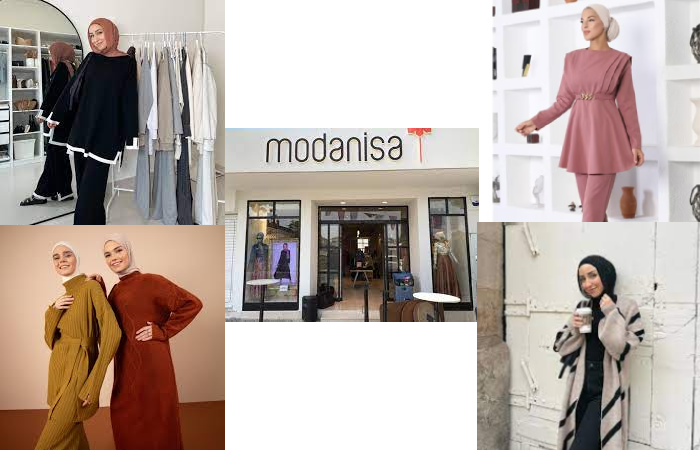
Modanisa: A Spotlight on its Contribution to Global Hijab Fashion
Established in 2011 in Turkey, Modanisa stands as a beacon in the world of online modest fashion retail. It was conceived with the aim to offer stylish, modern, and high-quality modest wear options for women. Today, the platform collaborates with 650 designers and suppliers, offering 70,000 unique items, shipped to 140 countries and available in 5 languages, making it the biggest global platform in its niche.
Its impact on bringing modern hijab styles to a global audience:
Modanisa is more than just an online marketplace. It has been instrumental in projecting modern hijab fashion onto the global stage. The brand not only offers traditional hijab styles but also curates a vast collection of contemporary designs which are appealing to a global audience. Its annual Modest Fashion Week in Istanbul is a testament to its global reach, attracting designers, influencers, and fashion enthusiasts from all over the world.
Social Media Influencers and Their Impact on Hijab Fashion Trends:
The role of influencers cannot be understated in the realm of hijab fashion. From teaching styling techniques to introducing emerging brands, these influencers serve as the bridge between consumers and fashion labels.
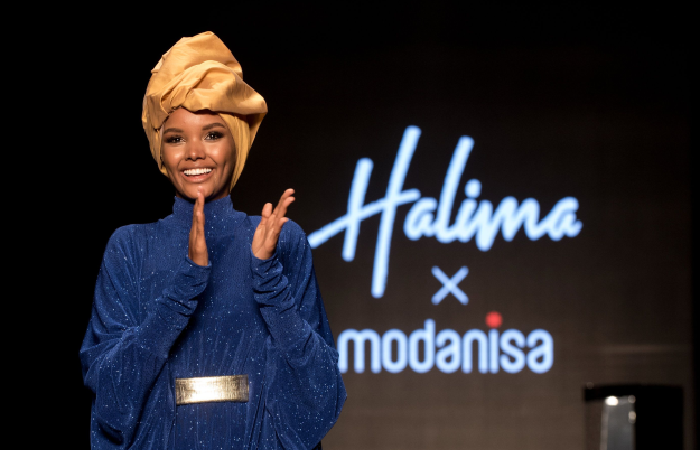
They are the trendsetters, ensuring that the hijab remains fresh and relatable for younger generations. Their multicultural backgrounds also allow them to infuse traditional styles with contemporary touches, leading to an exciting fusion of designs.
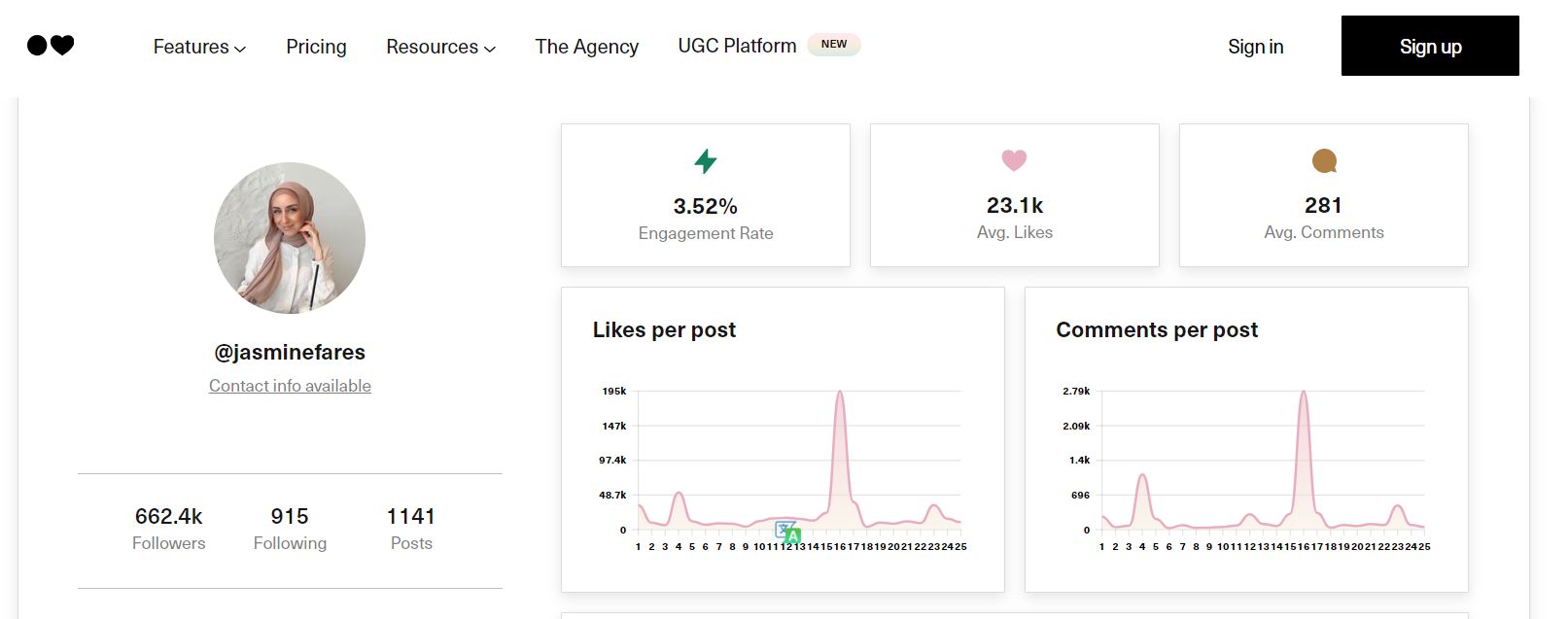
The Portrayal of Hijabis in Movies, TV Shows, and Music
Over the past decade, there has been a noticeable increase in the visibility of hijabis in mainstream media. Movies and TV shows are slowly beginning to cast hijab-wearing characters in more diverse roles, shedding the previously dominant stereotypical portrayals.
These characters are not defined by their hijabs but are seen as integral parts of their storylines, breaking down barriers and normalizing the hijab in the eyes of global audiences. Additionally, the music industry has also witnessed the rise of hijabi artists who are leaving their indelible mark.
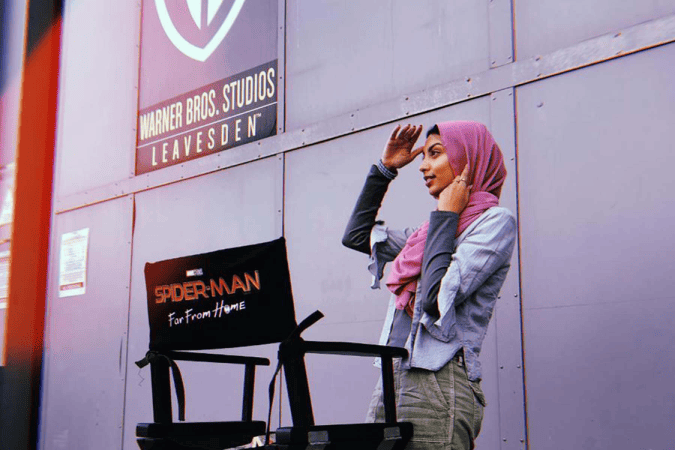
In conclusion, the evolution of hijab fashion across continents is a testament to the power of digital media and its ability to democratize fashion. The fusion of tradition with modern trends, guided by online platforms and influencers, paints an optimistic future for hijab fashion. A future where it's celebrated for its diversity, elegance, and relevance in the modern world.
Fusion and Unique Hijab Styles
For Muslim women, the hijab is a symbol of modesty, faith, and individual identity that is recognized around the world.
Its fundamental tenet is respecting individual freedom of speech while embracing religious traditions. Through investigating the diverse range of hijab styles across the globe, we may genuinely recognize the cultural diversity present in Muslim communities across the globe.
Every hijab style captures the customs, influences, and identities of the society in which it is worn, from the colorful interpretations seen in South and Southeast Asia to the traditional clothes of the Middle East.
Mutual respect and an appreciation of the hijab as a timeless and ancient type of clothing require an understanding of and appreciation for cultural diversity. To truly appreciate this styling method and discover the variety of looks it can create.
Fusion Of Hijab Styles
Among Muslim women, combining hijab styles from many cultures and areas is becoming more and more popular. Globalization, social networking, and the growing prominence of Muslim women in popular culture are some of the reasons behind this.
-
Hijab fashions have historically been shaped by regional climate and culture. Women in colder climates typically wear heavier, more opaque textiles, whereas women in hotter climes typically wear lighter, more breathable clothing.
-
Nonetheless, Muslim women have been increasingly experimenting with various hijab styles from other cultures in recent years.
-
Combining and matching various textiles and colors is one of the most common ways to combine hijab styles from other cultures.
Unique Hijab Styles
Seven different countries' inhabitants were polled in 2014 by The University of Michigan's Institute for Social Research. The bulk of the population was Muslim in these countries. Saudi Arabia, Egypt, Iraq, Lebanon, Tunisia, Turkey, and Pakistan were among them.
Voting on the best clothing for ladies to wear in public was conducted of the citizens of these countries. Based to the survey results, most participants in Egypt, Iraq, Tunisia, and Turkey chose to cover their heads. Saudi Arabia emerged as the most conservative nation, as reported by 63% of participants who wear the niqab. Pakistan accorded equal importance to the headscarf and the long chador garment. Half of the sample decided not to cover their heads at all in Lebanon.
Hijab Styles
The term tends to be used as a catchall in the West for all Islamic head coverings, but is mainly used to mean a headscarf. For Muslim women’s representation in media and popular culture, this is the most commonly used word. However, there is no uniform style for what hijabs look like or which are worn across the Muslim world.
Hijabs come in many patterns, fabrics, colours, and styles. In more liberal societies, it is up to personal preference to determine the type most commonly worn and referred to that covers the head and neck but leaves the face unobstructed.
Shayla: A Shayla is a long, rectangular scarf that is pinned or tucked in at the shoulders after being wrapped around the head. In the Persian Gulf, people like it. Although the terms are frequently used interchangeably, this one refers to a garment that covers the face. Whereas hijabs do not always imply such. This fashion style is made up of many different styles, colors, and materials.
Eşarp: Women in Turkey wear square silk scarves called eşarps. It is unique due to its substance, but it comes in a wide variety of patterns and hues.
Tudung: In Southeast Asia, a tudung is the most common head covering for Muslim women. According to Islamic tradition, the tudong is worn in religious areas in Malaysia, Singapore, Indonesia, and Brunei.
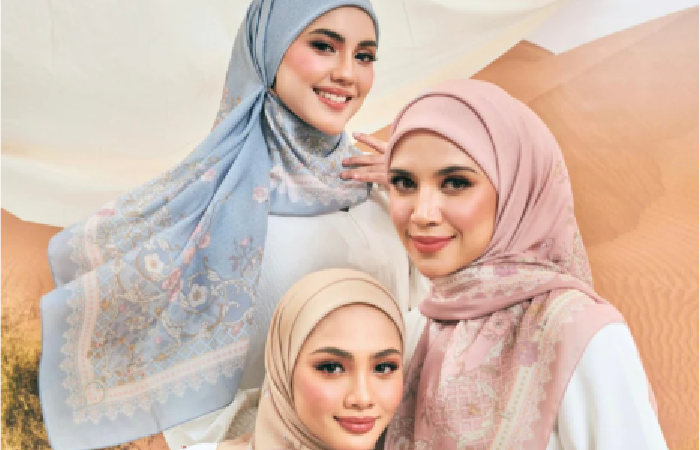
Typically, the tudung and hijab blend in with, covering only the face and leaving the hair, ears, and neck uncovered. It's part of the required attire for formal public events, school uniforms, and numerous offices. A tudung, or veil, is made slightly differently in Indonesia and features a curved visor sewed in to protect the user from the harsh sunlight.
Chador: A shawl-like semicircle of cloth worn over the head is called a chador. The chador is typically held together in front, beneath the neck, by hand as it lacks fasteners. To hold it steady, more pins or ties are sometimes used.
Although women frequently wear colorful variants of black at home or in the mosque, black is usually the most favored color in public. The majority of Shia-populated countries, including Iran, are big fans of chadors. Sometimes a smaller headscarf is worn underneath.
Al Amira: Often written Ameera, the Al-Amira is a two-piece veil consisting of a tube-shaped scarf and a tight-fitting cap made of cotton or another lightweight material.
Khimar: Generally hanging down to just above the waist, the khimar is a long, cape-like veil that falls farther than other veils. Khimars frequently entirely conceal the shoulders, neck, and hair while leaving the face uncovered.
As is common among some Egyptian women, some khimars, however, reach the knees. Any article of clothing that supports modesty by concealing the chest and shielding the wearer from the attention of unrelated men is referred to as khimar in historical contexts.
Battoulah: Among the least well-known or acknowledged items is most likely the battoulah.
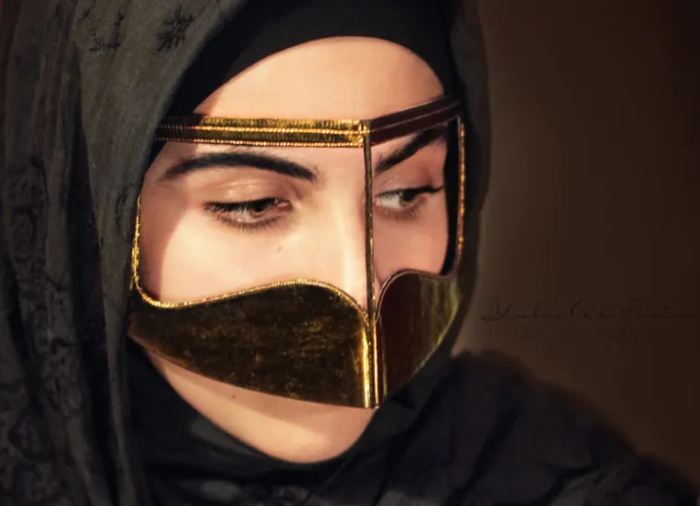
Due to the modesty it offers its wearer, this style of mask is often constructed of thick fabric—is occasionally referred to as a niqab. In some parts of the Gulf, such as Bahrain, Kuwait, Saudi Arabia, the United Arab Emirates, Oman, Qatar, and southern Iran, women wear the battoulah.
Generally, Bedouins and older married women wear it. It is said to prevent dust out of one's mouth and nose in the arid terrain. Unlike other traditions on this list, this one is not making a comeback in the fashion world because it is vanishing from newer generations.
Contemporary Brands and Their Influence
Modest fashion is a global trend that emphasizes greater body coverage through clothing. The main components of modest fashion are long, loose cuts; the headscarf is optional. The rules of modest fashion are: ankle lengths, sleeves that cover the wrists, no transparency, and no slender clothing that accentuates contours.
-
It appears that modest fashion is here to stay. According to research and advisory firm DinarStandard's 2022 State of the Global Islamic Economy Report, total spending on modest fashion rose by 5.7% in 2021, from 279 to 295 billion dollars.The Ssales are expected to reach $361 billion by 2023. This means that modest fashion is no longer the niche market it once was.
-
Every year, more and more chances for companies and shops arise as the demand for modest fashion rises.
-
Not only are specialty brands experiencing growth, but so are all the American and European fashion houses searching for fresh approaches to expand into the Middle Eastern markets.
-
Prominent brands in the fashion and luxury sectors, including Dolce & Gabbana, Prada, Oscar De La Renta, DKNY, and even Valentino—owned by the Qatari royal family's fund Mayhoola for Investments—have made their debuts in recent years with understated capsule collections and "Ramadan collections" geared toward young Muslim women.
-
Victoria Beckham, Yohji Yamamoto, Tommy Hilfiger, and even quick fashion behemoths like Zara, Mango, H&M, and Uniqlo are following suit.
Some of the most well-known players in the modest fashion industry include the retailers Modanisa, based in Istanbul, which was established in 2011 and makes over 150 million dollars in revenue annually by selling third-party and private label products in several nations.
"Modanisa has effectively expanded their reach and managed their expansion, which presents a challenge," previously said Alia Khan, the creator and chair of the Islamic Fashion and Design Council, situated in Dubai.
The Malaysian FV Group, which was established in Kuala Lumpur in 2010 by Vivy Yusof, is the owner of several other well-known companies, including Hijup, Louella, Veiled Collection, Niswa Fashion, and the modest swimwear line Lyra, which was started by Ikram in 2016.
However, the most recent Modest Fashion Week featured intriguing and bright brands, such as the previously mentioned Kaafmeem from Jeddah, which was a trailblazer of vibrant abayas in 2016, a year when modest fashion was still developing.
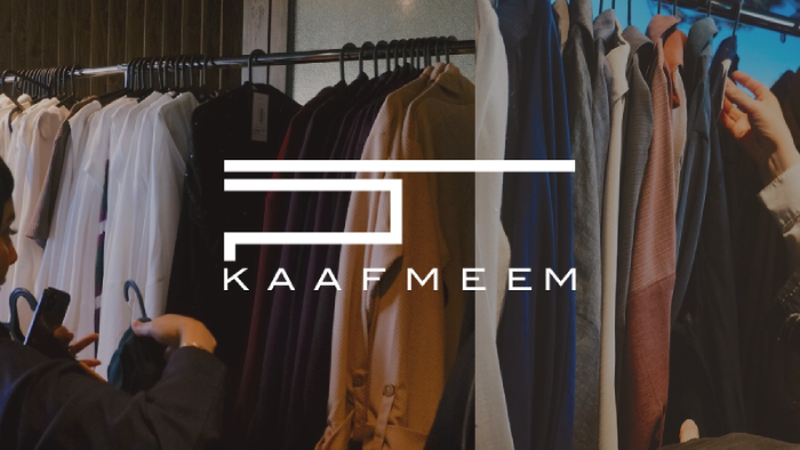
Co-founder Karima Saleh said, "We know customers want new styles of fashion, but we still need to keep some things familiar as that helps them to resonate with the product and keep buying." Understanding the cultural context is crucial, she added.
That is what Younass Collection, a Nigerian brand, is doing. The company, which was started by designer Soraya Adji, combines African designs and vivid, bright textiles with airy, modern styles.
"It was hard for me to find modest clothing that blended both cultures because I lived between France and Nigeria," she said. "I saw a gap in the market and started designing for it after that, and I gained customers from the UK, the US, the Middle East, and several African regions."
The tale of the recently established British company Daska is another captivating one. Maryam Khan founded it just a year ago with the intention of serving clients who might observe modesty as a way of life as opposed to a religious need.
The designer said, "I have discovered that the small UK market is quite traditional rather than tapping into international fashion trends that suited a wider customer base." "Meek customers are a lifestyle that people of all religions can choose to follow; there isn't just one kind of them."
The traditional hand needlework known as tatreez, which designer Sawsan Mahmoud personally produces with Palestinian artisans and then blends with contemporary motifs, is at the heart of Sawsan Design.
"As a designer, you can better serve your customers when you understand their values, way of thinking, and traditions because you are a part of their culture," the designer said.
Conclusion
The history of the hijab, from its origin to present day, is extensive and intricate in nature. It's tale is influenced by culture and region. It is still changing now.
Women in pre-Islamic Arabia donned veils to shield themselves from the sun and sand, which is where the hijab had its start. But the hijab was not a mandated religious item for Muslim women until the arrival of Islam.
The hijab has developed into many different forms and customs over time. This is because Islam is a religion practiced by people from all over the world. Muslim women have customized the hijab to match their own cultures.
Muslim women exhibit their uniqueness and creativity through fusing hijab styles from other cultures. Additionally, they utilize it to show their support for Muslim women worldwide.
The following are some significant moments in the history of the hijab
-
The hijab is a symbol of modesty and religious convictions for Muslim women.
-
Over time, the Muslim community has grown increasingly diversified, and the hijab has taken on several shapes.
-
Muslim women are experimenting more and more with various hijab looks, fusing elements from other cultures.
-
Muslim women can show their uniqueness and creativity with great effect by donning the hijab.
-
The hijab's journey reflects the diversity and vibrancy of the Muslim community.
